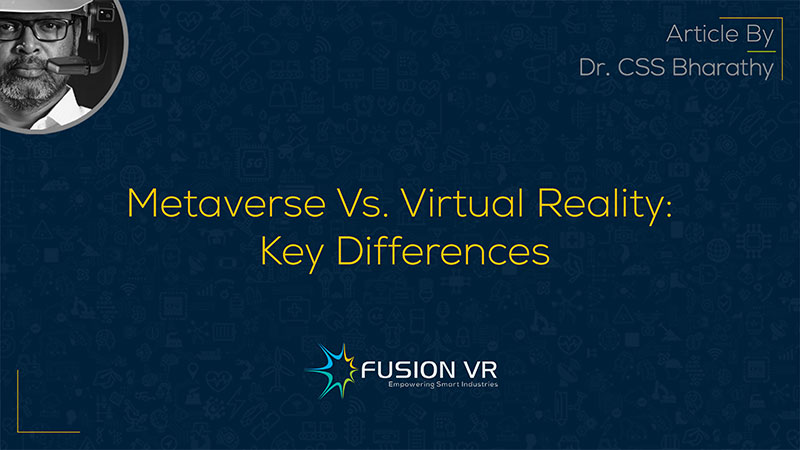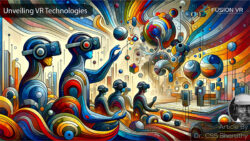With the upsurge in the popularity of the metaverse and the excitement it has caused, there have been many questions about it and some confusion if it is the same as virtual reality. Many are unfamiliar with these technologies and end up calling it the VR metaverse, metaverse virtual world, virtual reality metaverse etc.
The terms are being used incorrectly, and it’s essential to provide some clarity. As this is quite an early stage in the evolution of the metaverse, the confusion that we observe is justified as virtual reality is one of the many enabling technologies of the metaverse.
Facebook played a significant role in this growth in popularity when it rebranded itself as Meta in 2021. Mark Zuckerberg’s speech on the future of the metaverse has captured the imagination of young and old. Facebook had envisioned quite early and has betted on the metaverse as the future of human interaction and invested significant time and resources towards realising it.
Facebook is a leader in VR technology and also sells the Meta ( formerly Oculus) brand of VR headsets, which has played a massive role in popularising VR in gaming and commercial applications.
Meta isn’t the only company that has seen the potential of the metaverse. Companies such as Microsoft, Google, Sony and many more are jumping on the metaverse bandwagon and evangelising the acceptance of the metaverse among the general public. As an industry insider, it is also my duty to explain the differences between metaverse and VR, particularly for industry leaders, educational institutions and young professionals.
Firstly, the metaverse is a virtual 3D digital world that is a shared space and one in which users can explore and interact with other users for entertainment, commerce and experiences. It is based on an open platform and utilises technologies such as AR, VR, blockchain, decentralisation, 5G and other connectivity technologies etc. In comparison, virtual reality creates a 3D digital environment where user activity and experiences can be defined and limited.
Secondly, the open platform of the metaverse will enable users not just to experience it but also empower them to create their own content, share and even monetise it. Anyone could create applications that provide products and services that can be accessed in the metaverse. For example, as avatars in the metaverse, you and your bank’s representative could discuss and even finalise a potential home loan.
The agreement could be based on blockchain technology that is secure for generations to come. The time and effort to accomplish this would be much lesser than the conventional physical processes. It may be pretty apparent that all of the above would not be possible in a conventional virtual reality system.
The Metaverse: A Network of Multiple Virtual Environments
Thirdly, the metaverse is also, in reality, a network of multiple virtual environments. Since it is an open network, users can move between these spaces in a seamless manner or comply with any specific protocols laid out by that virtual world.
Users can travel across the metaverse to conduct their activities and interactions or enjoy experiences. This requires interoperability of the metaverse. The growth of the metaverse will eventually drive the various players to develop standards and protocols to make it interoperable.
There are many benefits to interoperability, such as moving NFTs, digital assets, and credentials and, more importantly, delivering value-added services across multiple virtual spaces that form the metaverse. Eventually, such capabilities could very well blur the experience between the real and virtual worlds.
The immersive experience in a virtual reality environment tricks the human brain into thinking that its physically in another environment. Such an experience is also possible in the metaverse, where users may shed their awareness of their physical surroundings and meld with their virtual experiences. In the course of time, as the metaverse experience is advanced, users may travel between the metaverse and their physical universe without even realising it.
Finally, it must be noted that the metaverse can be accessed with VR headsets, AR headsets and even conventional computers, while Virtual reality can only be experienced with a VR headset. The experience, therefore, is limited to specific equipment and locations.
Commercial activity involving blockchain, non-fungible tokens, or NFTs is already underway in the metaverse. People have begun to buy virtual spaces or real estate on the metaverse, which can be used to host virtual events or commercial activities. This, indeed, cannot be envisaged in conventional VR solutions. I hope that there is increasing clarity on the critical differences between the metaverse and virtual reality.
The future of the metaverse promises to be bright and exciting. Ordinary people, corporations, industries and the government will benefit from the decentralised and secure systems that the metaverse would bring. As with such technologies, there is also considerable anxiety and apprehensions about their broader impact.
The negative impact and resistance to the acceptance of cryptocurrency are seen across many nations. The tech community needs to be transparent and bring on board representatives and stakeholders across the spectrum to make the metaverse a healthy reality. For our part, we are focused towards making significant contributions to the enterprise metaverse and helping companies chart their metaverse strategy towards increased growth and returns in the decades to come.





